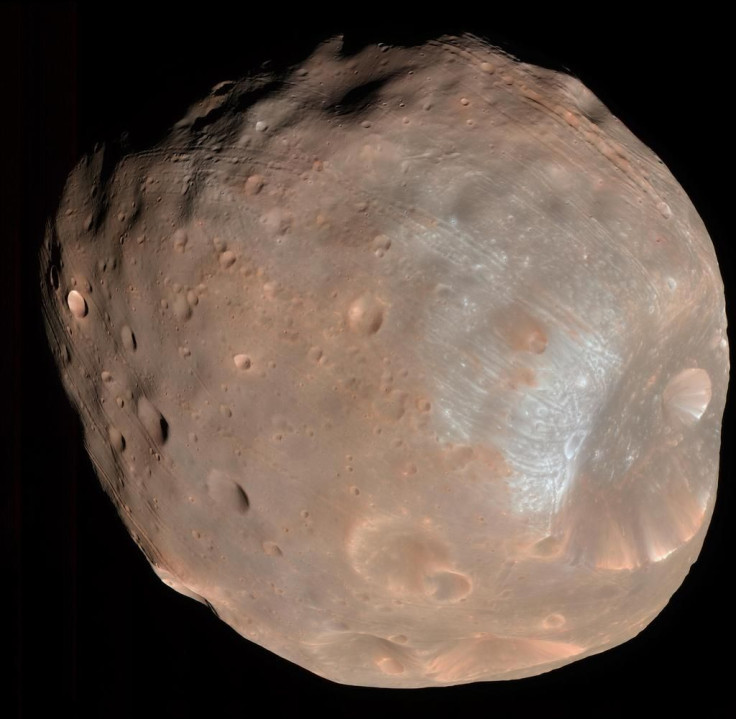Ring Around Mars: Red Planet Could Join Gas Giants With Ring System After Demise Of Phobos

In 20 million to 40 million years, Mars' moon Phobos will be gone. But it won't be forgotten. There are two possible scenarios for Phobos' fate after it's torn apart by the red planet: the moon will either transform into a ring system, or the pieces will crash into the planet. A new study suggests a ring around Mars is the more likely outcome.
Phobos' probable fate was revealed earlier this month by NASA researchers based on a revised understanding of the moon's structure. It was previously theorized that the long grooves on Mars' largest moon may have been caused by a previous impact that was responsible for the large Stickney Crater. Another theory was that ejected materials showered its surface behind the grooves. New models suggesting a more "spongelike" Phobos -- think rock clusters covered in a layer of sand -- revealed similar grooves caused by Mars' gravitational pull. Over time, Mars' gravity will create more stress fractures before Phobos breaks up completely.
Phobos' demise would last only a few days or weeks, researchers said. "If you were standing on the surface of Mars, you could grab a lawn chair and watch Phobos shearing out and spreading into a big circle," said Benjamin A. Black, a professor at the University of California, Berkeley's Earth and Planetary Sciences department.
After Phobos is no longer a moon, the rocks and dust could either form a ring or crash into Mars. Black and Tushar Mittal, also a professor at UC Berkeley, further refined the demise of Phobos. As Phobos gets pulled inward, Mars' gravitational influence increases. Some parts of Phobos are more structurally sound than others. The weaker, damaged material would be stripped to form a temporary ring around Mars, and Phobos' death spiral would leave behind a ring system similar to Saturn's. Mars would join Saturn, Jupiter, Neptune and Uranus as planets with ring systems.
To see Mars' future, one need only look to Saturn, whose famous rings were created by a similar process. It is theorized that comets and other trapped bodies were torn apart by the gas giant's gravity.
Any larger bits of Phobos would fall to the Mars' surface to form modest-sized craters. Mars' ring system would likely be stable for 1 million to 100 million years, according to the journal Nature Geoscience.
© Copyright IBTimes 2024. All rights reserved.






















